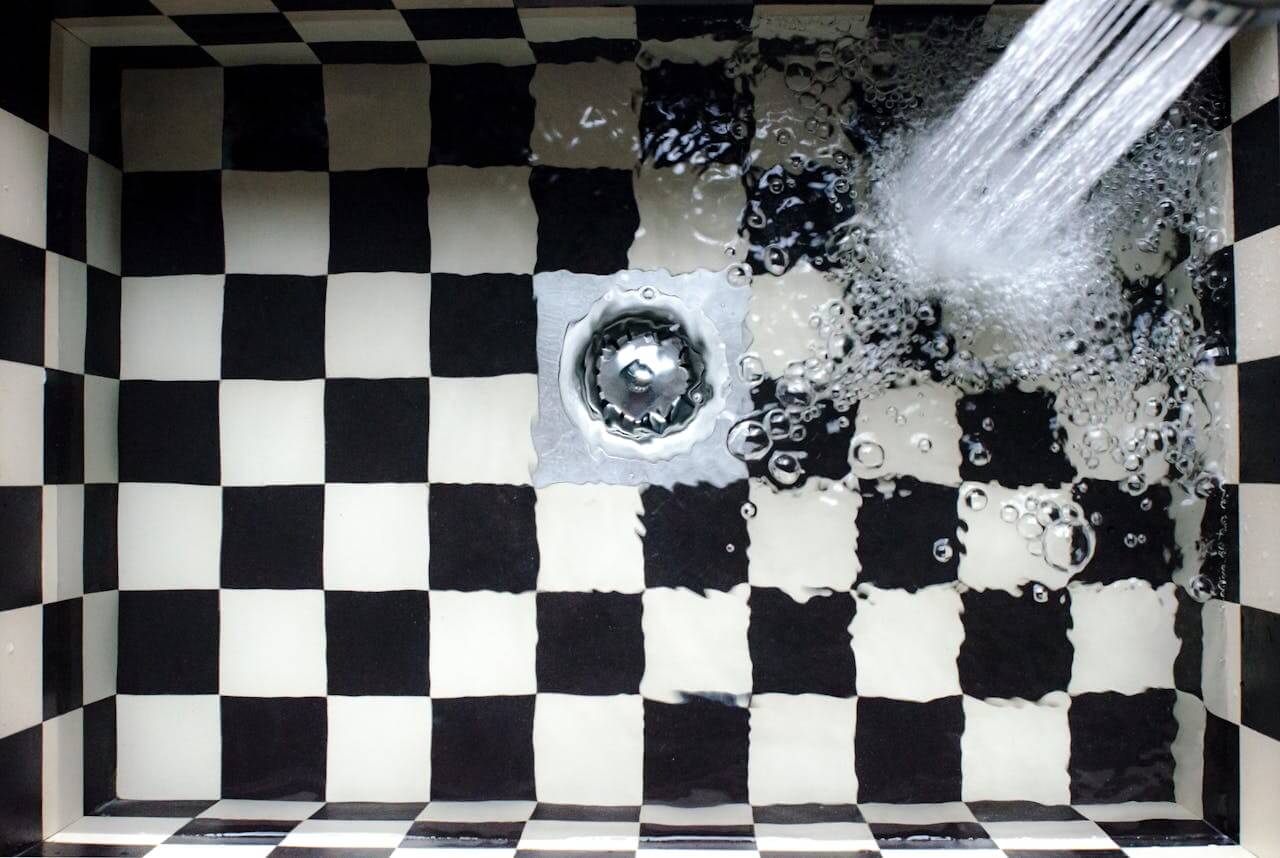What Types of Drains Are There and What Are the Differences?
It is generally agreed that most homes use four primary drainage types to deal with rainwater, and how exactly these drains are set up can have a big effect on how they work. To give you a basic understanding of each type, we’ve put together this guide on what types of drains are available and what their differences are.

Runoff Drains:
These drains collect water from the roof and direct it away from existing structures. Runoff drains consist of a system of collection pipes built around the edges of the roof (known as gutters) that gather the water and channel it down pipes that discharge it farther away from the home or into an underground gutter system. Homes with basements benefit greatly from properly designed runoff systems, as they prevent rainwater from saturating the soil near the basement walls.
Since all homes have foundations extending into the ground, directing water away prevents moisture buildup, fungus growth, and localized humidity. However, runoff drains require regular maintenance, particularly in areas with overhanging trees, as fallen leaves can clog the system. Fortunately, these systems are easy to clean, making maintenance a straightforward task.
Subsurface Drainage Systems:
Also known as “French Drains,” these systems are built underground in gardens and walkways to prevent soil from becoming waterlogged. Saturated soil takes a long time to dry and can be harmful to trees and grass. This household drainage system consists of perforated pipes laid underground in parallel arrays, covered with gravel and then earth. The gravel acts as a filter, preventing mud from entering and clogging the pipes.
These drainage systems often require a pump to move water efficiently, as small debris may obstruct water flow. While French drains can significantly improve garden health, they are difficult to maintain due to their underground placement and may need servicing or replacement every few years to ensure proper function.

Catch Basins:
Catch basins serve as the “backbones” of outdoor drainage systems. Typically positioned at the lowest points of sloped areas, they feature a grate that prevents large debris from entering. These drains often connect to runoff and French drain systems and can handle substantial amounts of water.
Catch basins have thick pipes capable of managing runoff from yards, roofs, and driveways. Their removable grates allow for easy cleaning, and due to their large capacity, clogging is rare. While they require less maintenance than French drains, they are not aesthetically pleasing and do not keep the surrounding soil as dry.
Foundation Drains:
Arguably the most crucial drains in a house, foundation drains prevent water buildup near the home’s foundation. Water accumulation can erode soil and compromise structural stability, making these drains indispensable. Unlike other drainage systems, foundation drains do not share waterways with others.
While runoff drains significantly reduce the amount of water near foundations, some moisture still seeps through the soil. Foundation walls prevent sunlight from drying the earth quickly, increasing the risk of long-term moisture issues. Some foundation drains use pumps, while others rely on gravity, but in homes with basements, it is strongly recommended to install a pump for added security.
Gutter Systems:
Gutter systems play a vital role in house drainage by collecting rainwater from the roof and directing it away from the home’s foundation. These systems consist of gutters installed along the edges of the roof, connected to downspouts that channel water safely away. Properly functioning gutters prevent soil erosion, basement flooding, and water damage to the structure.
Regular maintenance is essential to keep gutters clear of leaves, dirt, and debris that could cause blockages. Clogged gutters can lead to overflow, damaging the exterior walls and leading to foundation issues. Installing gutter guards and ensuring proper sloping can enhance their efficiency and reduce maintenance needs. A well-maintained gutter system contributes significantly to effective water management and prolongs the lifespan of a home’s structure.
Understanding the different types of drains can help homeowners maintain proper water management around their properties. While runoff drains, French drains, catch basins, and foundation drains serve different purposes, they collectively work to prevent water damage and structural issues. Additionally, maintaining household drains ensures the efficient flow of wastewater and prevents common plumbing problems.
New Canadian Drain & Plumbing is a top-tier plumbing company in Toronto, offering professional plumbing and drain repair services.


